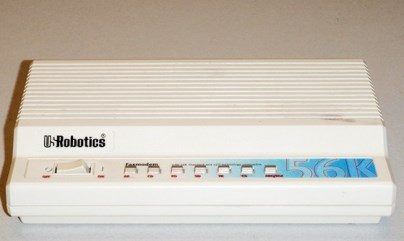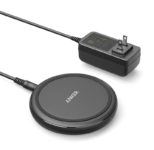
How Modems Work
How modems work: The Speed is far more important than the brand
(Text first published in 1994, it’s amazing to see how things have changed since tha times).
The consensus among hard-core computer users is that a computer without a modem is just a glorified typewriter. You don’t have to master the technology of a modem, but a little knowledge about them will go a long way in making your PC more than a fancy paperweight. We asked Andrew Kantor, associate editor of Internet World, a magazine that covers everything associated with the Internet, for a quick primer and some expert advice.
What is a modem? A modem is a device that allows your computer to send information to other computers through telephone lines. The word “modem” is a contraction of “modulator-demodulator,” which describes the device’s digital information as pulses of electricity, which are expressed in sequences of high and low tones. That’s why, when your modem is connecting, you hear weird screeches coming from it: Those screeches are the high and low tones going really, really fast over the phone lines.
How is a modem’s speed measured? By bits per second (bps) or kilobits per second (Kbps). A bit is equivalent to one electrical pulse. All modems use algorithms called compression schemes to crunch bits together, which makes transmission faster and more efficient. If the compression scheme is v.32, for example, the modem has a speed of 9600 bps; if it’s v.32, it supports 14.4 Kbps, and if it’s v.34, the modem can support 28.8 Kbps.
What speed modem should the average user buy? The fastest you can afford. Even if your online service supports only up to 9,600 bps, buy a 14.4 Kbps modem because you can bet that in the next few months the higher speed will be supported. Modems on the market now range from 9,600 bps to 28.8 Kbps. There are older modems that support speeds between 1,200 bps and 4,800 bps, but they’re incredibly slow. You can buy a newer, faster modem for about $100. Pprices on older modems are constantly dropping because the technology keeps getting faster.
But here’s the hitch: you can only connect as fast as the slowest access speed. In other words, even if you have a 28.8 Kbps, or VFAST modem, you’ll only access information at 9,600 bps if that’s the highest speed your online service supports. It works the other way, too. If you have a 2,400-bps modem, and your service supports 9,600 bps, you’ll still only connect at 2,400 bps. Still, always buy the fastest modem you can afford because, in the long run, it will save you time and money. The faster you can receive and send information, the less time you will spend online per task.
What is the difference between the various brands? Speed. Other than that, there is really no difference in terms of performance. Different brands might offer you different bells and whistles – the power switch is in the back on this one, it’s up front on that one – but those features only have to do with preference, not with things that you actually need.
The only difference in terms of compatibility is Macintosh versus PC, and there, the choice is simple: If you have a Mac, buy a modem made for Macs, and if you have a PC, buy a PC modem. All but one brand of modems on the market are based on the same chipset, so they’re basically all the same. Just look for one with the best warranty, and find a good dealer that will allow you to return the modem if you have a problem with it.
What is the difference between external and internal modems, and which should you buy? Again, there is really no viable performance difference between internal and external modems – it’s a matter of personal preference. If you have a computer that’s about a year old, you might, for example, want to get an internal modem because it’s convenient. An internal modem just looks like a circuit board with a lot of chips and stuff on it. All you have to do is open up your computer and stick the board in its slot, and, then, you never have to think about it. You don’t have to carry it around, it won’t take up space on your desk, and you can control the on-and-off switch and volume by software. If you have a laptop that’s about a year old, it probably is equipped with something called a PCMCIA slot on the side of the machine. This slot is made to hold a modem about the size of a credit card, which is compact and easy to tote around.
External modems look like palm-sized rectangular boxes. They’re encased in either plastic or metal. There are a few compelling reasons to buy an external modem, the first of which is that if you do have an older computer, you might not have a slot for an internal board, and thus you have no choice. However, you might also want the flexibility of transporting it. For example, if you have a desktop computer at the office, but you bring a laptop with you on business, it makes sense to buy an external modem so that you can swap it from one computer to the other.
Also, if you are really a computer nerd, you might want to save the slot space inside your PC. The average PC has six to eight open slots, into which you can insert video cards, sound cards – all kinds of peripherals to beef up your PC. If you want to save slots for things like that, buy an external modem.
Should you buy a modem that has fax and data capability? Definitely. These days, in fact, you probably can’t find a modem that doesn’t have both. The advantage of having faxing capability is that you can send computer generated faxes directly from your computer, and you can receive them. Just print them out for hard copies. All you need is a good faxing software package. Most modems come with a basic fax software package, but you can buy a really good one for about $80.
How do you connect your modem to go online? Just plug the power cord into the wall, and the phone line into a phone jack, then turn it on. Then call up an online service. That’s it.
How modems work and what your modem is telling you:
A guide to those blinking lights, be they vertical or horizontal.
HS – High Speed. Your modem is set up to communicate at its highest speed.
AA – Auto Answer. Your modem is set to answer incoming calls.
CD – Carrier Detect. Your modem is connected to another modem.
OH – Off Work. Your modem is in use, either answering an incoming call or placing an outgoing one.
RT or RX – Receive Data. Your modem is receiving data from another modem.
ST or SX – Send Data. Your modem is sending data to another modem.
MR – Modem Ready. Your modem is on.
TR – Terminal Ready. A hardware connection exists between your computer and your modem.
See also:
- Best place to sell your used Apple device online. Free shipping. Top cash guaranteed.
How modems work. Old modem Robotics 56. Source of the photo: psoih.com






Facebook
Twitter
RSS